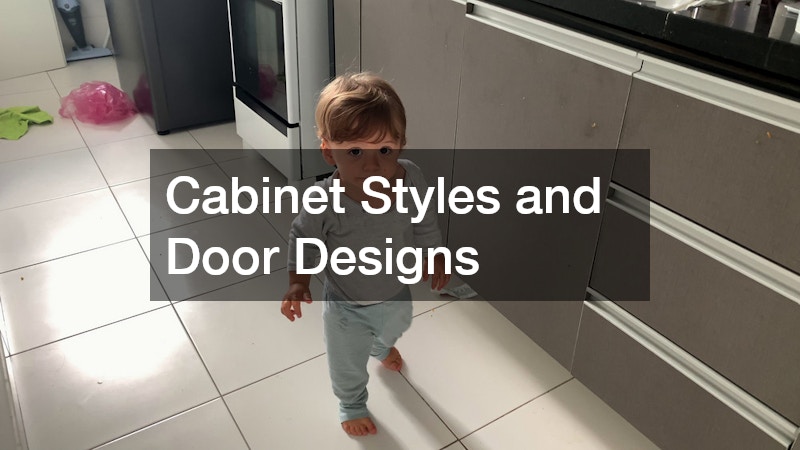Cabinets are an essential part of every home. From kitchens and bathrooms to living rooms and offices, cabinets offer much more than just storage—they add character, define design, and improve functionality in any space. Whether you’re remodeling, building a new home, or simply upgrading a room, understanding the basics of cabinetry is the first step toward creating a space that’s both beautiful and practical.
Types of Cabinets
Cabinets generally fall into three categories: base, wall, and tall cabinets.
-
Base Cabinets: These are mounted to the floor and serve as the foundation for countertops. They typically house sinks, appliances, and storage for larger items like pots and pans.
-
Wall Cabinets: Installed on the wall above base cabinets, these units are ideal for storing dishes, glassware, and pantry items within easy reach.
-
Tall Cabinets: Often referred to as pantry cabinets, these extend from floor to ceiling and offer ample vertical storage for food, cleaning supplies, or even built-in ovens.
Each type plays a specific role in a room’s functionality, especially in high-traffic areas like kitchens or bathrooms.
Cabinet Styles and Door Designs
One of the most noticeable elements of any cabinetry system is its style. The door design, finish, and hardware all contribute to the overall aesthetic of the room. Some of the most popular cabinet styles include:
-
Shaker: Known for their clean lines and recessed panel doors, shaker cabinets are versatile and suit both modern and traditional interiors.
-
Flat-Panel (Slab): These cabinets offer a minimalist, contemporary look with smooth, flat surfaces and no frame.
-
Raised-Panel: Often seen in more classic or traditional homes, these cabinets feature a central panel that is slightly raised for added detail.
-
Beadboard: With vertical grooves, beadboard cabinets bring a charming, cottage-style feel to a space.
Hardware such as knobs and pulls can also significantly impact the cabinet’s look. Sleek metal finishes offer a modern vibe, while more ornate hardware can enhance traditional or rustic themes.
Cabinet Materials
Cabinet construction materials play a key role in both durability and appearance. Here are some common materials used in cabinetry:
-
Solid Wood: Often used for cabinet doors and frames, solid wood offers natural beauty and strength. Different types of wood—like maple, oak, cherry, or birch—have distinct grains and colors.
-
Plywood: This engineered wood is often used for cabinet boxes due to its strength and resistance to warping.
-
Medium-Density Fiberboard (MDF): Smooth and stable, MDF is often used for painted cabinet surfaces. It doesn’t have a natural wood grain but holds paint exceptionally well.
-
Particleboard: A budget-friendly option, particleboard is made from wood chips and resin. While less durable than plywood or MDF, it is commonly used in affordable cabinet construction.
The choice of materials depends on where the cabinets will be installed and how they’ll be used. For example, moisture-prone areas like bathrooms may require materials with added water resistance.
Cabinet Construction and Features
Cabinets are built using either framed or frameless construction.
-
Framed Cabinets: These include a face frame on the front of the cabinet box, offering added strength and a more traditional appearance. Doors attach to the frame and may partially or fully overlay it.
-
Frameless Cabinets: Sometimes called European-style cabinets, these lack a front frame, providing a cleaner look and more accessible interior space. The doors attach directly to the cabinet sides.
Modern cabinetry often includes features designed for improved usability and organization, such as:
-
Soft-close hinges and drawer glides
-
Pull-out shelves and trays
-
Built-in organizers for utensils, spices, and pans
-
Vertical dividers for baking sheets or cutting boards
These features enhance functionality and make daily tasks more convenient.
Cabinet Finishes
The finish you choose can dramatically change the look and feel of your cabinets. Common options include:
-
Painted Finishes: Provide a smooth, clean appearance and are available in a wide variety of colors to match your decor.
-
Stained Finishes: Highlight the natural grain of the wood and offer a warm, classic look.
-
Glazed Finishes: Add depth and character by applying a thin layer of glaze over paint or stain.
-
Laminate and Thermofoil: Synthetic finishes that provide a durable, easy-to-clean surface. They come in various colors and textures and are often used in contemporary designs.
Each finish option affects both aesthetics and maintenance, so it’s important to consider the room’s use and your preferred upkeep level.
Choosing Cabinets for Each Room
While cabinetry is most commonly associated with kitchens and bathrooms, it also plays a key role in other areas of the home:
-
Laundry Rooms: Cabinets in laundry areas help organize cleaning supplies, detergents, and extra linens.
-
Home Offices: Built-in cabinets and shelving units can keep your workspace tidy and efficient.
-
Living Rooms: Media centers and built-ins around fireplaces offer storage while contributing to the room’s style.
-
Garages: Durable cabinets provide essential storage for tools, equipment, and seasonal items.
When choosing cabinetry for different rooms, always think about the specific needs of the space, including what will be stored and how often it will be accessed.
Cabinetry is one of the most important design elements in any functional space. It impacts organization, efficiency, and aesthetics across your home. From choosing the right style and material to selecting thoughtful features and finishes, understanding your cabinetry options can help you make informed decisions that match your lifestyle and design goals.
With careful planning and attention to detail, the right cabinets can transform any room into a more beautiful and functional space.




